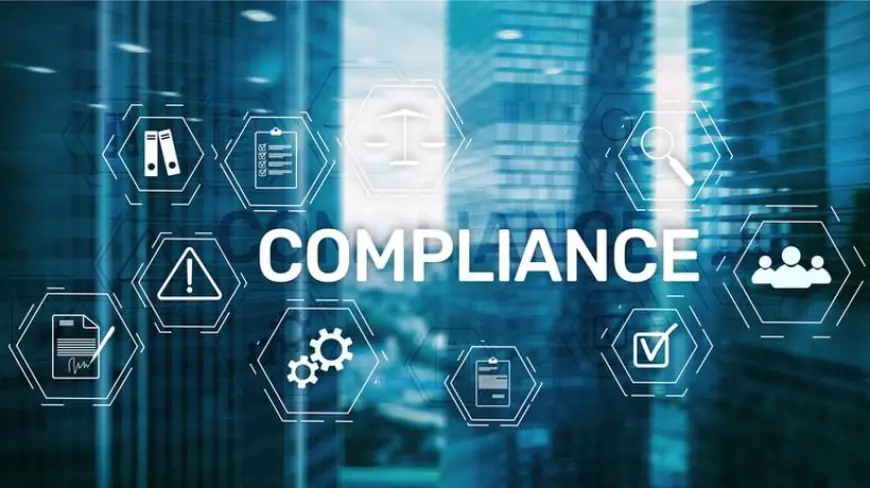The Role of Compliance IT in Today’s Digital Landscape
Discover how Compliance IT helps organizations meet regulatory standards, protect data, and ensure business continuity in today’s digital world.

Introduction
In today’s digital-first business environment, compliance is no longer optional—it’s essential. Companies face increasingly strict regulations around data security, privacy, and operational practices. From financial institutions adhering to SOX and PCI-DSS to healthcare providers managing HIPAA rules, every industry is touched by compliance standards. Compliance IT is useful in this situation.
Compliance IT refers to the use of information technology systems, processes, and services to ensure an organization meets industry-specific regulations and internal governance policies. Beyond avoiding penalties, it builds trust with clients, safeguards sensitive data, and strengthens long-term resilience.
What is Compliance IT?
Compliance IT encompasses the strategies, tools, and practices organizations use to remain aligned with regulatory standards. It combines technology with frameworks for governance, risk management, and compliance (GRC).
Some of the main areas Compliance IT covers include:
-
Data protection and privacy: Ensuring personal and sensitive information is securely stored and transmitted.
-
Regulatory adherence: Meeting standards like HIPAA, GDPR, CMMC, or ISO 27001.
-
Audit readiness: Maintaining clear documentation and reports for regulators or third-party assessors.
-
Risk management: Identifying vulnerabilities and minimizing exposure to security or compliance breaches.
Why Compliance IT Matters
1. Avoiding Legal and Financial Penalties
Non-compliance can lead to hefty fines and even loss of business licenses. By implementing IT compliance systems, organizations proactively reduce these risks.
2. Building Customer Trust
In an age where data breaches make headlines, customers want assurance their information is safe. Compliance demonstrates commitment to protecting that trust.
3. Supporting Business Continuity
Disaster recovery and cybersecurity frequently intersect with compliance IT. By securing data and systems, it helps keep businesses operational during crises.
4. Staying Competitive
Many contracts—especially government or enterprise-level ones—require proof of compliance. Businesses that cannot demonstrate it may lose opportunities.
Key Regulations That Drive Compliance IT
Different industries face unique compliance requirements. Here are some of the most influential:
-
HIPAA (Health Insurance Portability and Accountability Act): Governs healthcare data privacy and security.
-
GDPR (General Data Protection Regulation): Sets standards for data protection in the European Union.
-
CMMC (Cybersecurity Maturity Model Certification): Required for contractors working with the U.S. Department of Defense.
-
PCI-DSS (Payment Card Industry Data Security Standard): Ensures safe handling of cardholder data in financial transactions.
-
SOX (Sarbanes-Oxley Act): Applies to financial reporting and corporate governance.
Staying ahead of these rules requires not just awareness, but a structured IT approach to compliance.
Strategies for Implementing Compliance IT
1. Conduct Regular Risk Assessments
Identify where sensitive data resides, how it flows, and where vulnerabilities exist. Assessments allow businesses to prioritize compliance efforts effectively.
2. Use Automation for Monitoring and Reporting
Automated compliance tools can continuously monitor systems, generate reports, and alert teams to issues before they escalate.
3. Train Employees
Human error remains a leading cause of compliance failures. Ongoing training ensures staff understands policies and their role in protecting data.
4. Integrate with Cloud Security
Cloud services must be configured for compliance. Many providers offer built-in compliance tools, but they need proper implementation.
5. Partner with Compliance Experts
For businesses without in-house expertise, partnering with IT compliance specialists can streamline the process. For example, organizations seeking SharePoint Utah consulting may also benefit from services tailored to compliance-focused document management.
Challenges in Compliance IT
Even with advanced tools, maintaining compliance is not without challenges:
-
Constantly evolving regulations mean businesses must stay updated.
-
Resource limitations may prevent smaller companies from dedicating staff solely to compliance.
-
Integration issues arise when aligning compliance solutions with legacy systems.
-
Global operations require balancing different regulatory frameworks simultaneously.
The correct technological stack and a strategic approach are both necessary to overcome these obstacles.
The Future of Compliance IT
As technology evolves, compliance requirements will grow more complex. AI-driven monitoring, zero-trust security models, and advanced encryption will become standard elements of compliance. Organizations that embrace proactive IT compliance strategies now will be better equipped to navigate these future demands.
Moreover, compliance is increasingly viewed not just as a checkbox exercise but as a competitive advantage. Businesses that prove their systems are safe and compliant gain credibility in the marketplace.
FAQs About Compliance IT
Q1: What industries need Compliance IT the most?
A: Industries like healthcare, finance, defense contracting, and retail face the strictest requirements, but nearly all organizations benefit from compliance IT.
Q2: How often should compliance audits be conducted?
A: While it depends on industry standards, most businesses should conduct audits at least annually and after any major system changes.
Q3: Is Compliance IT only about cybersecurity?
A: No. While cybersecurity is a key component, compliance also includes governance, reporting, employee training, and policy management.
Q4: Can small businesses afford compliance IT solutions?
A: Yes. Many cloud providers and managed IT services offer affordable compliance packages designed for small and mid-sized businesses.
Conclusion
Compliance IT is no longer a background task—it’s central to business success in 2025 and beyond. By integrating compliance into IT systems, organizations can reduce risks, protect sensitive data, and build lasting trust with stakeholders.
For businesses seeking guidance, leveraging compliance-focused IT services ensures readiness for audits, resilience against threats, and alignment with ever-changing regulations.
Files
What's Your Reaction?
 Like
0
Like
0
 Dislike
0
Dislike
0
 Love
0
Love
0
 Funny
0
Funny
0
 Angry
0
Angry
0
 Sad
0
Sad
0
 Wow
0
Wow
0



















































